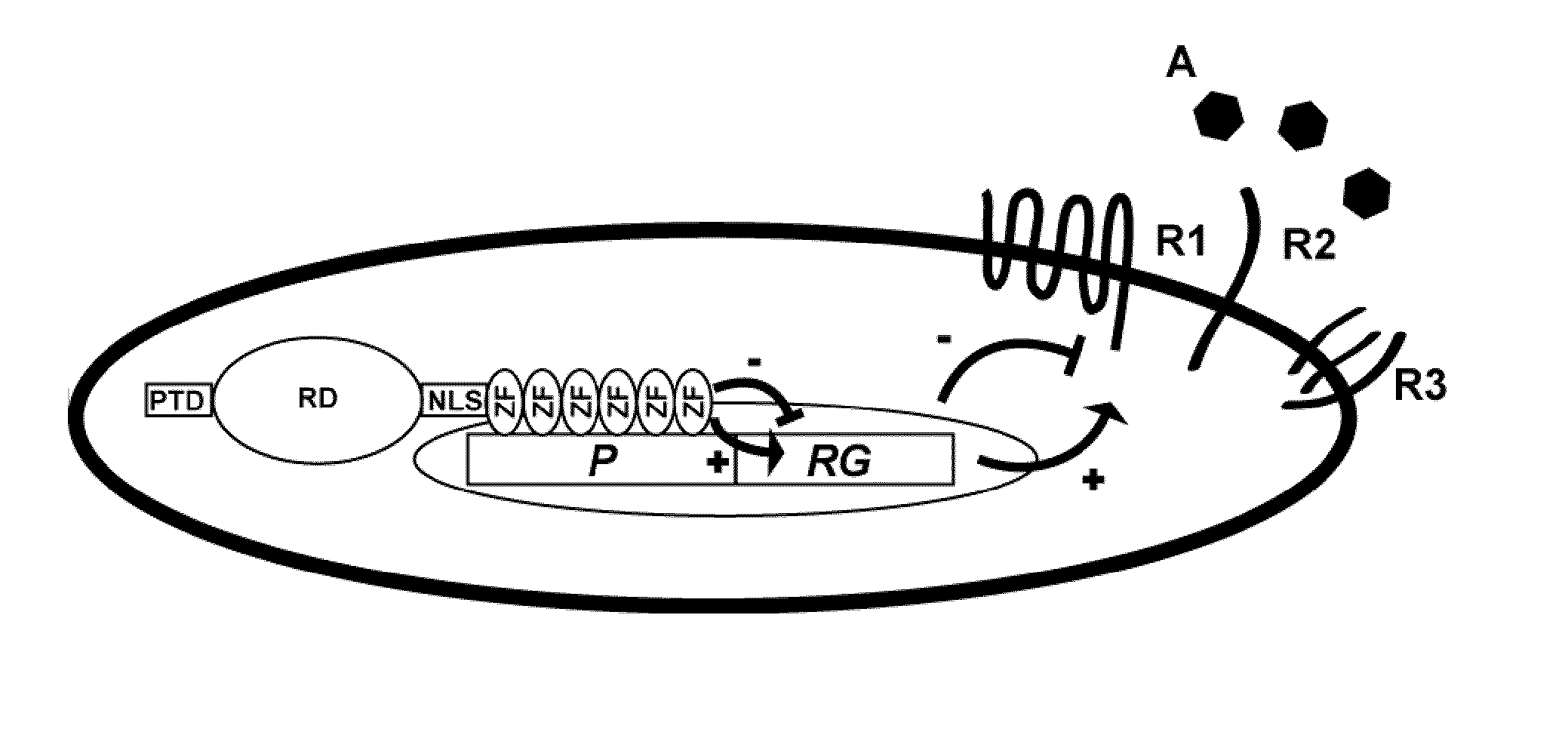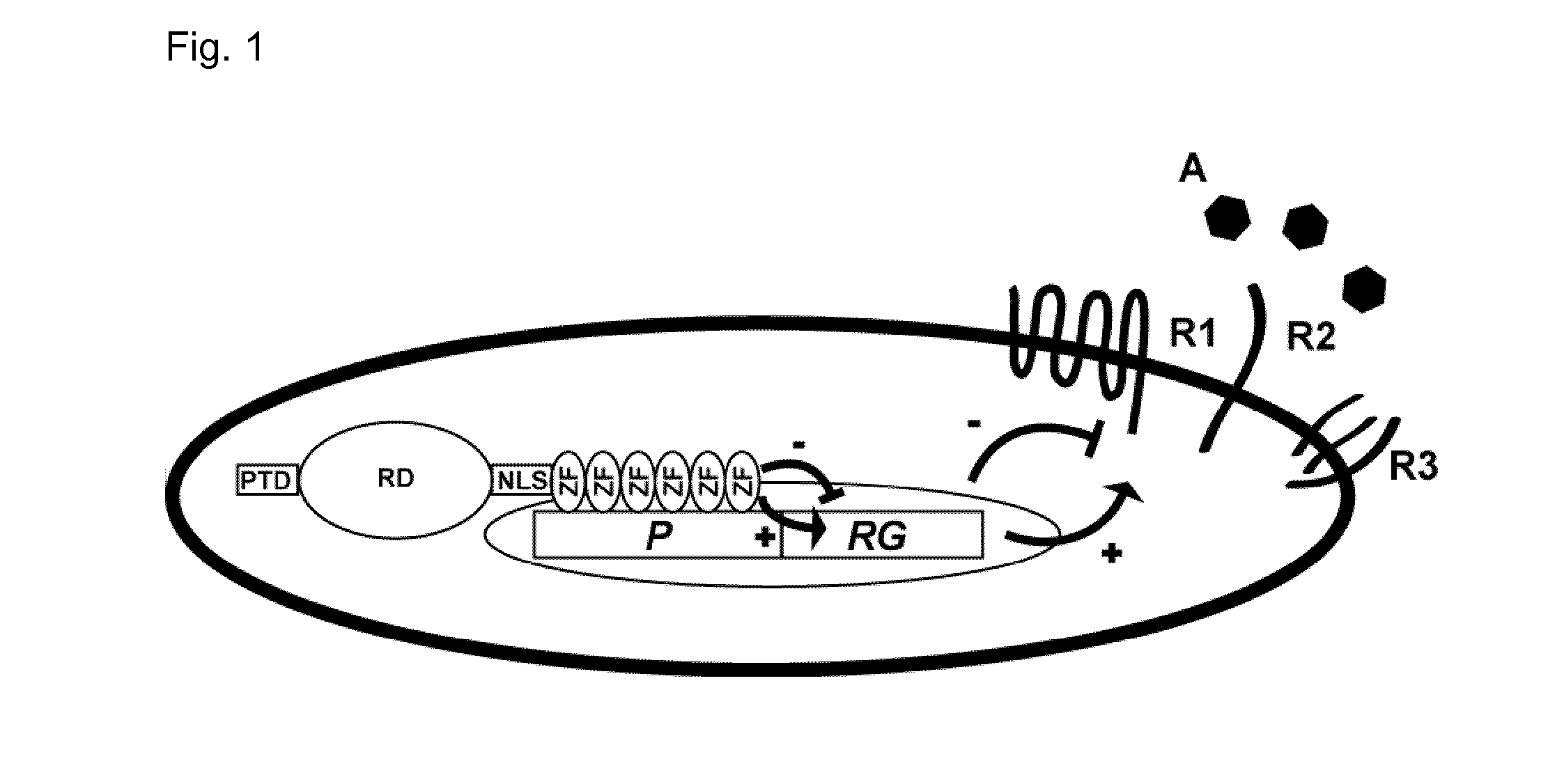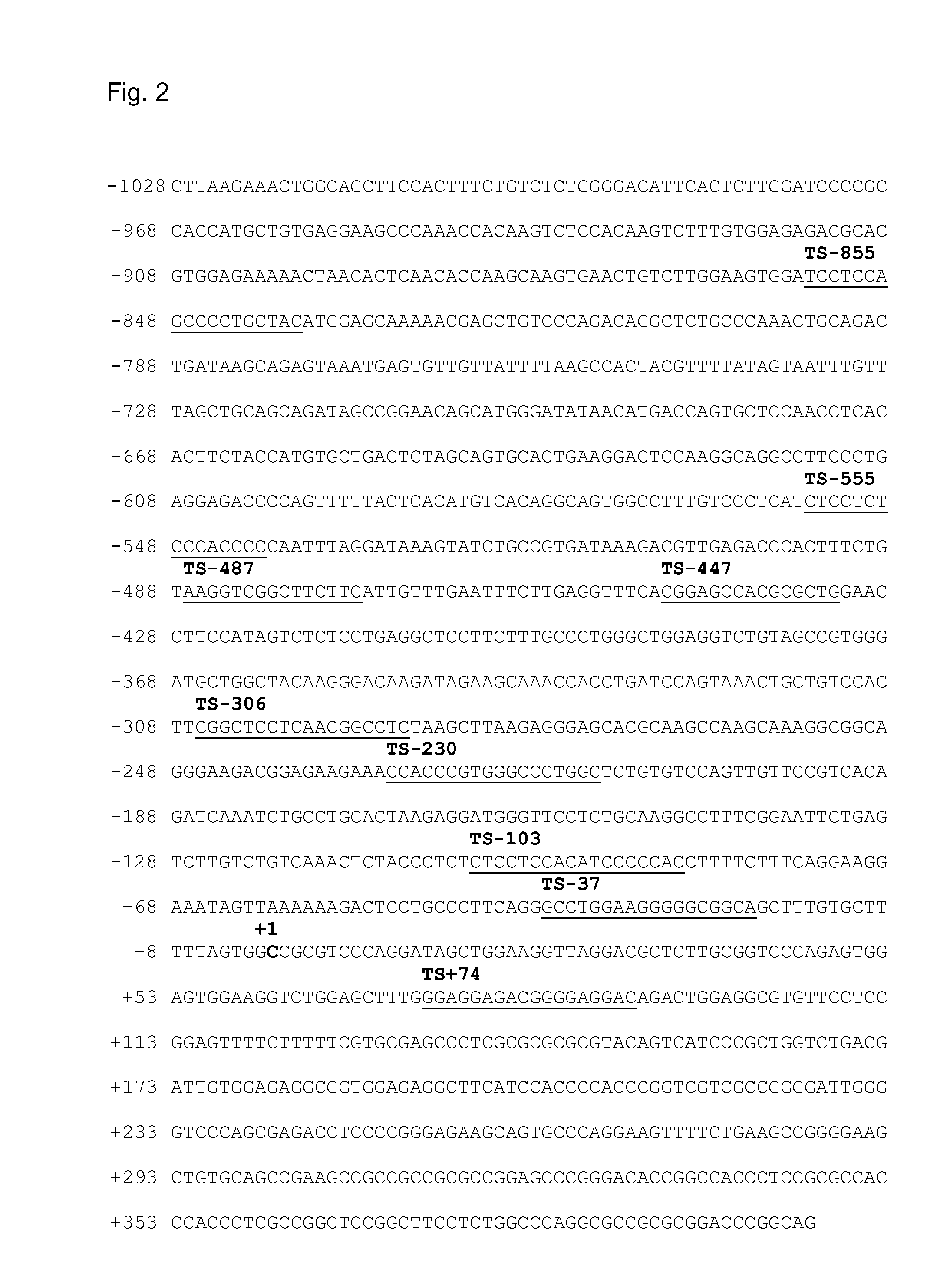Regulation of receptor expression through delivery of artificial transcription factors
a technology of artificial transcription factor and receptor, which is applied in the direction of drug compositions, peptide sources, peptide/protein ingredients, etc., can solve the problems of reperfusion injury, unattractive manipulation targets, and hamper the usefulness of therapeutic artificial transcription factor approaches, and achieve the effect of lowering or increasing the level of high-affinity ige receptors
- Summary
- Abstract
- Description
- Claims
- Application Information
AI Technical Summary
Benefits of technology
Problems solved by technology
Method used
Image
Examples
examples
[0136]For all cloning steps, restriction endonucleases and T4 DNA ligase were purchased from New England Biolabs. Shrimp Alkaline Phosphatase (SAP) was from Promega. The high-fidelity Platinum Pfx DNA polymerase (Invitrogen) was applied in all standard PCR reactions. DNA fragments and plasmids were isolated according to the manufacturer's instructions using NucleoSpin Extract II kit, NucleoSpin Plasmid kit, or NucleoBond Xtra Midi Plus kit (Macherey-Nagel). Oligonucleotides were purchased from Sigma-Aldrich. All relevant DNA sequences of newly generated plasmids were verified by sequencing (Microsynth).
Design and Cloning of Two Hexameric Zinc Finger Proteins (ZFP−855a and ZFP+74a)
[0137]To generate artificial transcription factors regulating ETRA expression, a fusion protein consisting of TAT-KRAB-ZFP was designed and the corresponding, codon-optimized DNA sequence was obtained through gene synthesis. For the ZFP part of the fusion protein, human ETRA promoter ...
PUM
| Property | Measurement | Unit |
|---|---|---|
| concentrations | aaaaa | aaaaa |
| concentrations | aaaaa | aaaaa |
| volume | aaaaa | aaaaa |
Abstract
Description
Claims
Application Information
 Login to View More
Login to View More - R&D
- Intellectual Property
- Life Sciences
- Materials
- Tech Scout
- Unparalleled Data Quality
- Higher Quality Content
- 60% Fewer Hallucinations
Browse by: Latest US Patents, China's latest patents, Technical Efficacy Thesaurus, Application Domain, Technology Topic, Popular Technical Reports.
© 2025 PatSnap. All rights reserved.Legal|Privacy policy|Modern Slavery Act Transparency Statement|Sitemap|About US| Contact US: help@patsnap.com



